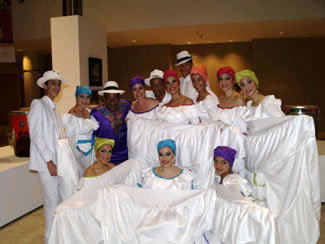Introduction

Emancipation Day in Puerto Rico is a significant and deeply rooted celebration that commemorates the abolition of slavery in the island territory. This day holds profound cultural and historical importance, reflecting the resilience and strength of the Puerto Rican people in their pursuit of freedom and equality.
Historical Background
Emancipation Day in Puerto Rico traces its roots back to March 22, 1873, when the Spanish government, which then controlled the island, enacted the Moret Law. This historic legislation granted freedom to enslaved individuals born after September 17, 1868. The law aimed to gradually abolish slavery in Puerto Rico, aligning with a global shift towards recognizing the inherent rights of all individuals.
The Moret Law, named after Spanish politician Segismundo Moret, represented a crucial step towards dismantling the oppressive system of slavery that had plagued the island for centuries. However, it's important to note that full emancipation did not occur until March 22, 1873, making this date a pivotal moment in Puerto Rican history.
Cultural Significance
Emancipation Day is not merely a historical event; it is a celebration of resilience, cultural identity, and the enduring spirit of the Puerto Rican people. The abolition of slavery marked a turning point, paving the way for a new era of freedom and self-determination.
Throughout the years, Emancipation Day has become a day of reflection and remembrance, honoring the struggles of those who fought against the chains of slavery and acknowledging the contributions of Afro-Puerto Ricans to the island's rich cultural tapestry. The day is marked by various cultural events, including music, dance, art, and traditional ceremonies that pay homage to the African roots embedded in Puerto Rican heritage.
Celebrations and Traditions

Emancipation Day is celebrated with a blend of historical reverence and cultural festivities across Puerto Rico. Communities come together to organize parades, concerts, and art exhibitions that showcase the diversity of Puerto Rican culture and the resilience of its people.
One of the prominent features of the celebrations is the Bomba and Plena music and dance. These traditional Afro-Puerto Rican art forms serve as a powerful means of expression, connecting individuals with their African ancestry while celebrating the triumph over oppression. The vibrant rhythms and movements of Bomba and Plena embody the spirit of freedom and unity, providing a unique and captivating experience for both locals and visitors alike.
Moreover, various educational initiatives take place during Emancipation Day, fostering awareness about the island's history and the ongoing efforts to preserve and promote its cultural diversity. Schools, museums, and community organizations collaborate to organize workshops, lectures, and exhibitions that highlight the significance of Emancipation Day in shaping Puerto Rico's collective identity.
Conclusion
Emancipation Day in Puerto Rico serves as a poignant reminder of the island's journey towards freedom and equality. Beyond its historical roots, the celebration embodies the strength, resilience, and cultural richness of the Puerto Rican people. As the island continues to navigate the complexities of its history and identity, Emancipation Day stands as a beacon of hope and a testament to the enduring spirit of a community that has overcome adversity to embrace its diverse heritage.

No comments:
Post a Comment